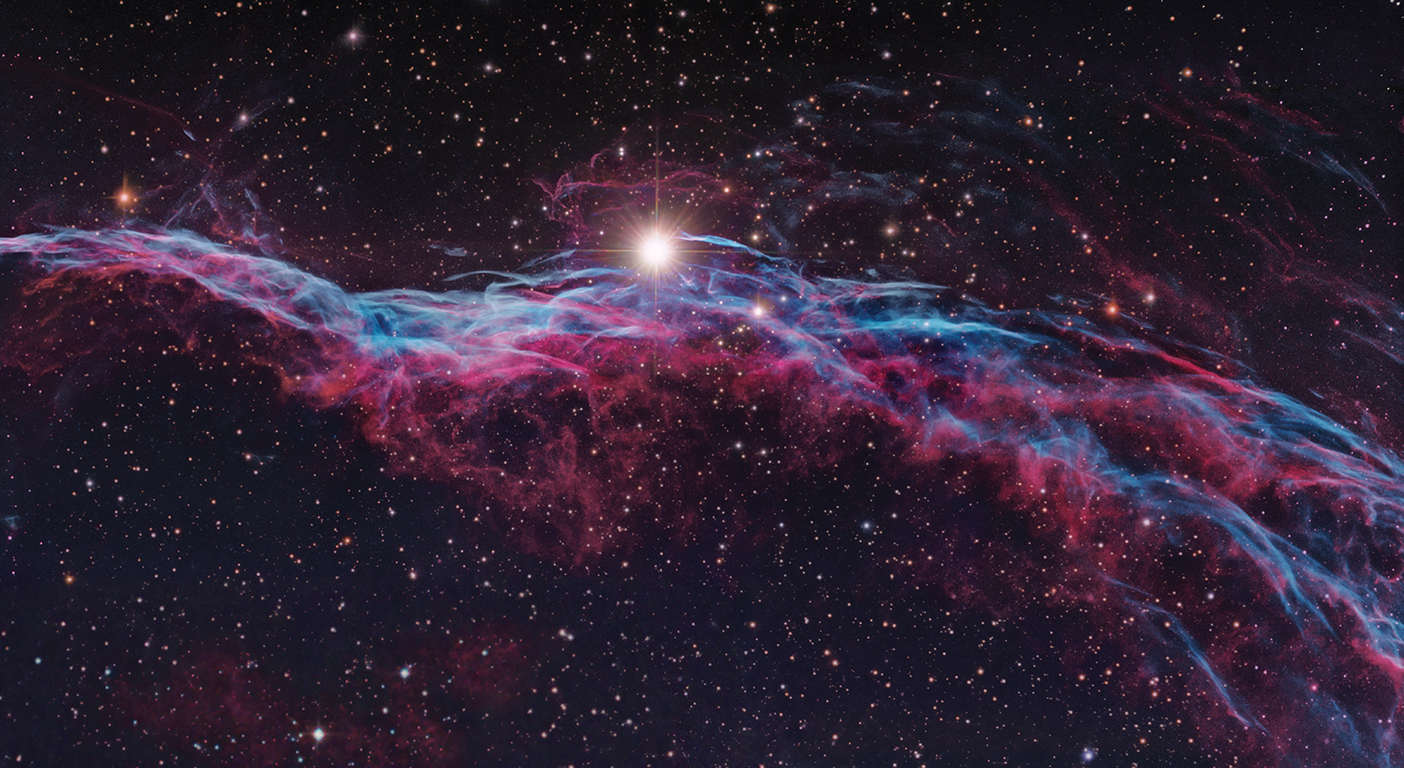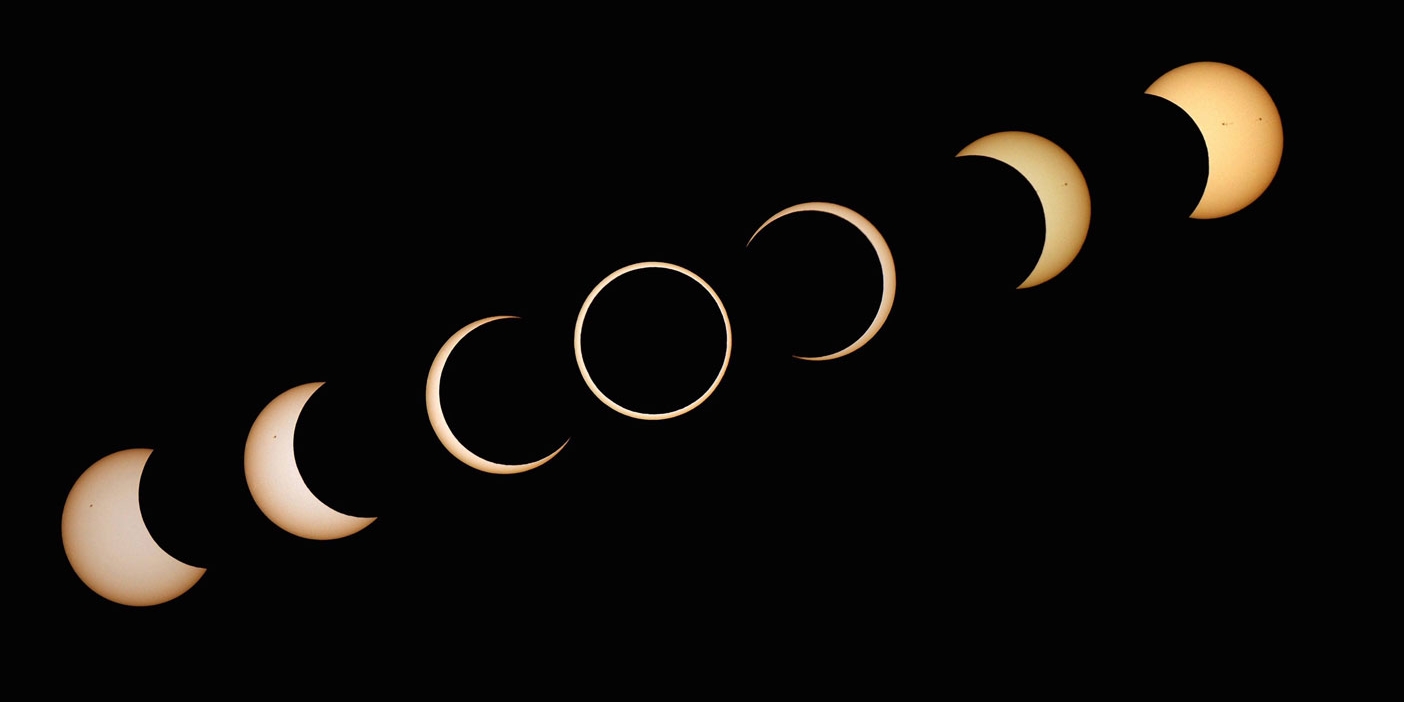
From an earthly vantage point, the Veil Nebula, pictured here, covers an area of the night sky that is more than six times the apparent diameter of the full moon. Even so, it is invisible to the naked eye. The 0.9-meter telescope and research CCD camera at BYU’s West Mountain Observatory, which can take thousands of pictures on any given night, captured this closer look by layering together dozens of images from exposures of several minutes each.
The intricate nebula derives its name from its fragile, draped appearance and, as one of the largest and most impressive supernova remnants, is popular with astrophotographers.
“It is so large on the plane of the sky that a typical telescope only sees a fraction of the entire nebula,” says astronomy professor Michael D. Joner (BS ’79, MS ’81, PhD ’11), explaining that this image shows the nebula’s western portion. “The whole complex is the result of a large star that exploded as a supernova between 5,000 and 8,000 years ago off in the direction of the constellation of Cygnus.”












